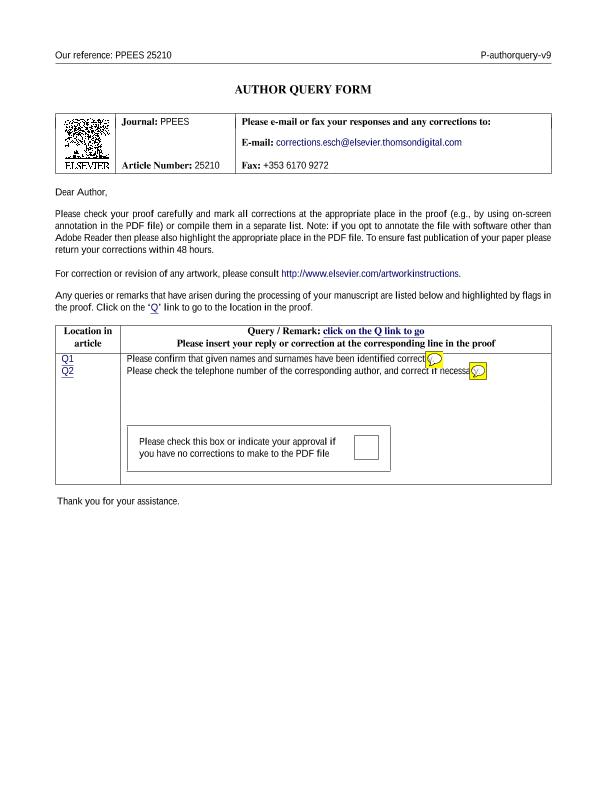Artículo
The ontogeny of plant indirect defenses
Fecha de publicación:
09/2013
Editorial:
Elsevier
Revista:
Perspectives in Plant Ecology Evolution and Systematics
ISSN:
1433-8319
Idioma:
Inglés
Tipo de recurso:
Artículo publicado
Clasificación temática:
Resumen
Plants frequently attract natural enemies of their herbivores, resulting in a reduction in tissue damage and often in enhanced plant fitness. While such indirect defenses can dramatically change as plants develop, only recently have ecologists begun to explore such changes and evaluate their role in mediating plant-herbivore-natural enemy interactions. Here we review the literature documenting ontogenetic patterns in plant rewards (i.e. extrafloral nectaries (EFNs), food bodies (FBs) and domatia) and volatile organic compounds (VOCs), and identify links between ontogenetic patterns in such traits and the attraction of natural enemies (ants). In the case of reward traits we concentrate in ant-plant studies, which are the most numerous. We report that all indirect defensive traits commonly vary with plant age but ontogenetic trajectories differ among them. Myrmecophytic species, which provide both food and shelter to their defenders, do not produce rewarding traits until a minimum size is reached. Then, a pronounced increase in the abundance of food rewards and domatia often occurs as plants develop, which explains the temporal succession or colony size increase of mutualistic ant species and, in some cases, leads to a reduction in herbivore damage and enhanced fitness as plants age. In contrast, ontogenetic patterns were less consistent in plant species that rely on VOC emissions to attract natural enemies or those that provide only food rewards (EFNs) but not nesting sites to their associated ants, showing an overall decline or lack of trend with plant development, respectively. Future research should focus on uncovering: (i) the costs and mechanisms underlying ontogenetic variation in indirect defenses, (ii) the relative importance of environmental and genetic components shaping these ontogenetic trajectories, and (iii) the consequences of these ontogenetic trajectories on plant fitness. Advances in this area will shed light on the context dependency of bottom-up and top-down controls of herbivore populations and on how natural selection actually shapes the ontogenetic trajectories of these traits.
Archivos asociados
Licencia
Identificadores
Colecciones
Articulos(INIBIOMA)
Articulos de INST. DE INVEST.EN BIODIVERSIDAD Y MEDIOAMBIENTE
Articulos de INST. DE INVEST.EN BIODIVERSIDAD Y MEDIOAMBIENTE
Articulos(SEDE CENTRAL)
Articulos de SEDE CENTRAL
Articulos de SEDE CENTRAL
Citación
Quintero, Carolina; Barton, Kasey E.; Boege, Karina; The ontogeny of plant indirect defenses; Elsevier; Perspectives in Plant Ecology Evolution and Systematics; 15; 5; 9-2013; 245-254
Compartir
Altmétricas




